|
View as a webpage
|
 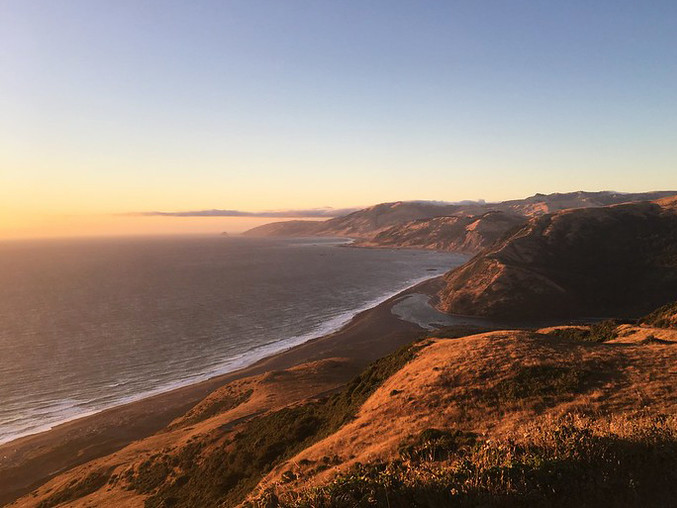 Prosper Ridge, Arcata Field Office
|
|
ISSUE 887- Jan. 31, 2020
|
|
|
- Recreation and Public Access
- Headlines and Highlights
- BLM and DOI Highlights
- Wildlife Question of the Week
- Upcoming Events

National Hare and Hound Desert Motorcycle Race was a success
Last weekend, Desert MC National Hare & Hound hosted the National Hare and Hound Desert Motorcycle Race at Johnson Valley Off-Highway Vehicle Recreation Area managed by BLM California Barstow Field Office. More than 425 racers competed in the event. (BLM CA Facebook)
|
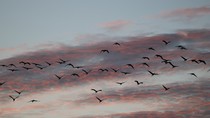
Sandhill Cranes at the Preserve
Watching the majestic Sandhill Cranes fly in at sunset is spectacular. Come see the cranes at the Cosumnes River Preserve. This gorgeous shot was taken by Mark Vihtelic. (Cosumnes River Preserve Facebook)
|
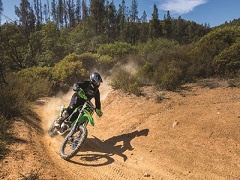
BLM Ukiah Field Office to host public meeting for OHV grant
The Bureau of Land Management is seeking public comments to help develop off-highway vehicle grant proposals to the California State Parks Off-Highway Motor Vehicle Recreation Division (OHMVR) during an open house meeting on Thursday, Feb. 13, from 5:30 to 7 p.m., at the Ukiah Field Office, 2550 North State Street, Suite 2, Ukiah. (BLM news release)
|
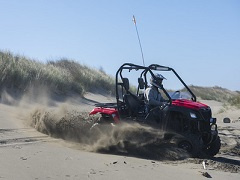
BLM Arcata Field Office hosting a public meeting on OHV grant needs
The Bureau of Land Management’s Arcata Field Office is holding a public meeting and accepting public comments regarding management needs and projects that would benefit off-highway vehicle recreation on public lands. The meeting is Wednesday, Feb. 11, at 5 p.m. at the BLM Arcata Field Office, 1695 Heindon Road, Arcata, CA, 95521. (BLM news release)
|

Open house for USFS and BLM OHV grants scheduled
The Bureau of Land Management Bishop Field Office and Inyo National Forest will hold an open house at the co-located BLM/Forest Service office, 351 Pacu Lane, Bishop, from 5 to 7 p.m. on Thursday, Feb. 6, to gather public input for potential off-highway vehicle grant funding requests. (BLM news release)
|
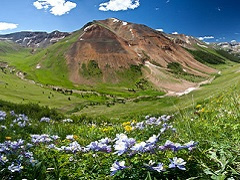
BLM seeks public’s help in increasing access to public lands
As part of its efforts to implement the John D. Dingell, Jr. Conservation, Management, and Recreation Act, the Bureau of Land Management (BLM) is seeking public assistance in nominating lands managed by the agency on which the public is allowed to hunt, fish, or use the land for other recreational purposes, but to which there is no legal public access or where access is significantly restricted. (BLM news release)
|
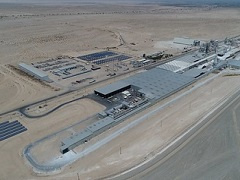
BLM approves US Gypsum Mine Expansion and Modernization Project
The Bureau of Land Management has approved the expansion and modernization of the United States Gypsum mine located on approximately 40 acres of public lands in southwestern Imperial County. (BLM news release)
|

Thank You for your service K-9 Hoost
K-9 Hoost, an 11-year-old Belgian Malinois, was the faithful and loyal law enforcement partner of BLM Field Staff Ranger Chris Rice for eight years before his retirement from federal service in 2018. (BLM CA Facebook)
|

Public is invited to discuss invasive plants
The public is invited to attend a free discussion about non-native invasive plants – their impact on biodiversity and what people can do to address the issue – on Sunday, Feb. 3, at 3 p.m., at the Healy Center, 456 Briceland Road, in Redway. (BLM news release)
|
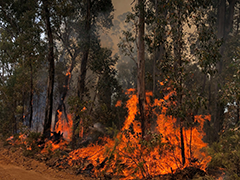
BLM Redding Field Office plans pile burning near Douglas City
Crews from the Bureau of Land Management plan to burn piles of brush and small trees in a project area near Douglas City during the week of Jan. 27-31. Crew members will light the piles only when weather and fuel moisture allow for safe and successful burning. (BLM news release)
|
|

Interior on the world stage for conservation
In addition to conserving America’s public lands and working within the United States, Interior and its bureaus collaborate with nations around the world to protect resources and at-risk species. (DOI news release)
|

Secretary Bernhardt signs order grounding Interior's drone fleet for non-emergency operations
Secretary Bernhardt signed Secretary's Order 3379 ordering the temporary cessation of non-emergency unmanned aircraft systems fleet operations. (DOI news release)
|
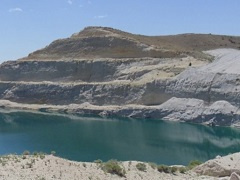
BLM seeks nominations for 2020 Reclamation and Sustainable Mineral Development Awards
The BLM is seeking nominations for the 2020 Reclamation and Sustainable Mineral Development Awards. These awards, presented annually, showcase some of the finest examples of responsible mineral resource development. (BLM news release)
|

To encourage visitation and appreciation for America’s public lands, the Bureau of Land Management (BLM) announced that it will waive recreation-related visitor’s fees during five 2020 Fee-Free Days. (BLM news release)
|
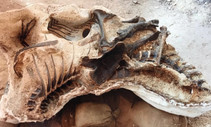
This Week at Interior January 31, 2020
This Week: President Trump signs the USMCA into law; it’s the first meeting of the Task Force on Missing and Murdered American Indians and Alaska Natives; a magnitude 7.7 earthquake in the Caribbean rattles nerves from Miami to Mexico, and more! (DOI video)
|
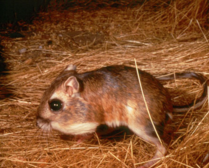
Multiple Choice
In celebration of the Chinese New Year, we like to highlight one of California’s endangered species, the kangaroo rat, which is neither a kangaroo or a rat. How far can a giant kangaroo rat leap?
Keep scrolling to find out!
|
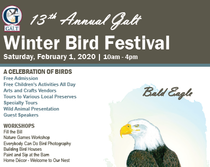
Winter Bird Festival at Cosumnes River Preserve Feb. 1
The Galt Winter Bird Festival is approaching quick! There are so many fun activities for the whole family. You can sign up for tours, workshops, explore the festival, and celebrate our local wildlife with the whole community. The Cosumnes River Preserve will have an outreach booth as well as tours on parts of the Preserve that are not normally open to the public. (Galt website)
|
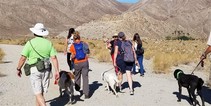
Happy Tails Dog Adventure at the La Quinta Cove
Thursday, 20 February 2020 from 08:30-10:00
Doggos! Fetch your leash and join other puppers on an outing in the great outdoors. “Happy Tails” provides fun exercise while exploring in nature. Learn about doggo-friendly trails along with local history, plants and wildlife. Set in the nearby Santa Rosa and San Jacinto Mountains National Monument, this guided walk is designed to help locals learn how to enjoy the desert's Public Lands with attention to Bighorn Sheep. (BLM CA Facebook)
|

Yoga with a Ranger
Friday, 21 February 2020 from 09:00-10:00
Join a National Monument park ranger for a fun yoga flow for all skill levels. Connect with the landscape through a sequence of physical postures, movements, and breathing techniques that also strengthen your body and mind. Poses commonly mimic Earth, animals and trees. This outdoor activity is routinely performed barefoot. Bring a yoga mat or towel, water, and sunscreen. Limited to 15 participants. Meet on the Visitor Center patio. (BLM CA Facebook)
|

These Alabama Hills are Alive
Saturday, 22 February 2020 from 10:00-13:00
Explore the mysteries hidden within the eroded granite rock while walking through the passageways and along the ridge lines that make up the maze of this amazing setting. Learn about the many secretive creatures and flora hidden within the rocks. This is a moderately strenuous hike with occasional steep sections of trail.
Free Community Program open to the public. (BLM CA Facebook)
|

Public Nominations for Resource Advisory Councils Open
Deadline to submit nominations is Monday, 24 February 2020
The Northern California, Central District and Desert Resource Advisory Councils are seeking nominations for public members. These citizen-based committees assist in the development of recommendations that address public land management issues. The BLM maintains 37 such advisory committees formally chartered under the Federal Advisory Committee Act (FACA) and the Federal Policy and Land Management Act (FLPMA) across the West. Of those committees, 31 are RACs and the remainder are site or subject-specific advisory councils. Each RAC consists of 10 to 15 members from diverse interests in local communities, and they assist in the development of recommendations that address public land management issues.
|
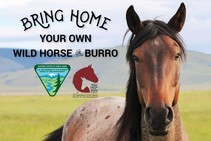
Ongoing: Bring Home a Wild Horse or Burro
The BLM Wild Horse and Burro Program is excited to announce nearly 70 events this year as part of BLM's efforts to find good homes for our nation's wild horses and burros. Known for their intelligence, endurance and loyalty, wild horses and burros, with the right training, are outstanding for trail riding, packing, working and have successfully competed for awards in numerous fields from endurance riding to dressage. With more than 81,000 wild horses and burros on BLM-managed public lands, these wild icons of our American history need your help more than ever. Without any natural predators that can control population growth, wild horse and burro herds grow rapidly on the range and can quickly overcome the land's ability to support them. The BLM works to maintain healthy wild herds by gathering excess animals and placing them into good homes. (BLM website)
Related: Adoption Incentive Program (BLM website)
|
|
WILDLIFE QUESTION OF THE WEEK ANSWER
The answer is 6 ft. Kangaroo rats often leap a distance of 6 feet, and reportedly up to 9 feet.
The giant kangaroo rat (Dipodomys ingens) is the largest of more than 20 species in the genus Dipodomys, which is in the family Heteromyidae. This family includes kangaroo rats, kangaroo mice, and pocket mice. Their name is based on the fact that they are adapted for two-footed (bipedal) hopping like a kangaroo.
Adult giant kangaroo rats weigh 4.6 to 6.4 ounces (131 to 160 grams) and are 12.2 to 13.7 inches (311 to 348 millimeters) long. They have large, flattened heads and short necks. Large, fur-lined cheek pouches extend as deep pockets of skin along the sides if the head. Their hind limbs are large compared to the size of their forelimbs. Their tails are longer than their combined head and body length. The tails have a crest of long hairs, terminating in a large tuft. Giant kangaroo rats are distinguished from the similar San Joaquin kangaroo rats (Dipodomys nitratoides) by the number of toes on their hind feet. Giant kangaroo rats have five toes, San Joaquin kangaroo rats have four.
Giant kangaroo rats develop burrow systems with one to five or more separate openings. There are generally two types of burrows: 1) vertical shaft with a circular opening and no dirt apron 2) larger, more horizontally-opening shaft—usually wider than high—with a well-worn path leading from the mouth. Reproduction is influenced by population density and availability of food.
The species prefers annual grassland on gentle slopes of generally less than 10°, with friable, sandy-loam soils. However, most remaining populations are on poorer, marginal habitats which include shrub communities on a variety of soil types and on slopes up to about 22°. They are primarily seed eaters; however, they also eat green plants and insects. They cache ripening seed heads in small surface pits or large stacks on the surface over their burrow system. After curing for several weeks, seeds are transported to underground larders. Giant kangaroo rats forage on the surface from around sunset to near sunrise, with most activity taking place in the first two hours after dark. Foraging activity is greatest in the spring as seeds of annual plants ripen. Commonly consumed seeds include peppergrass (Lepidium spp.), filaree (Erodium cicutarium), Arabian grass (Schismus arabicus) and brome grasses (Bromus spp.).
(Fish & Wildlife Service)
|
|
|
News.Bytes is a publication of the Bureau of Land Management in California.
Bureau of Land Management
California State Office
2800 Cottage Way, Suite W1623
Sacramento, CA 95825
(916) 978-4600
Send comments to the News.Bytes Team | Subscribe to News.Bytes | Unsubscribe
|
     
|
|
|